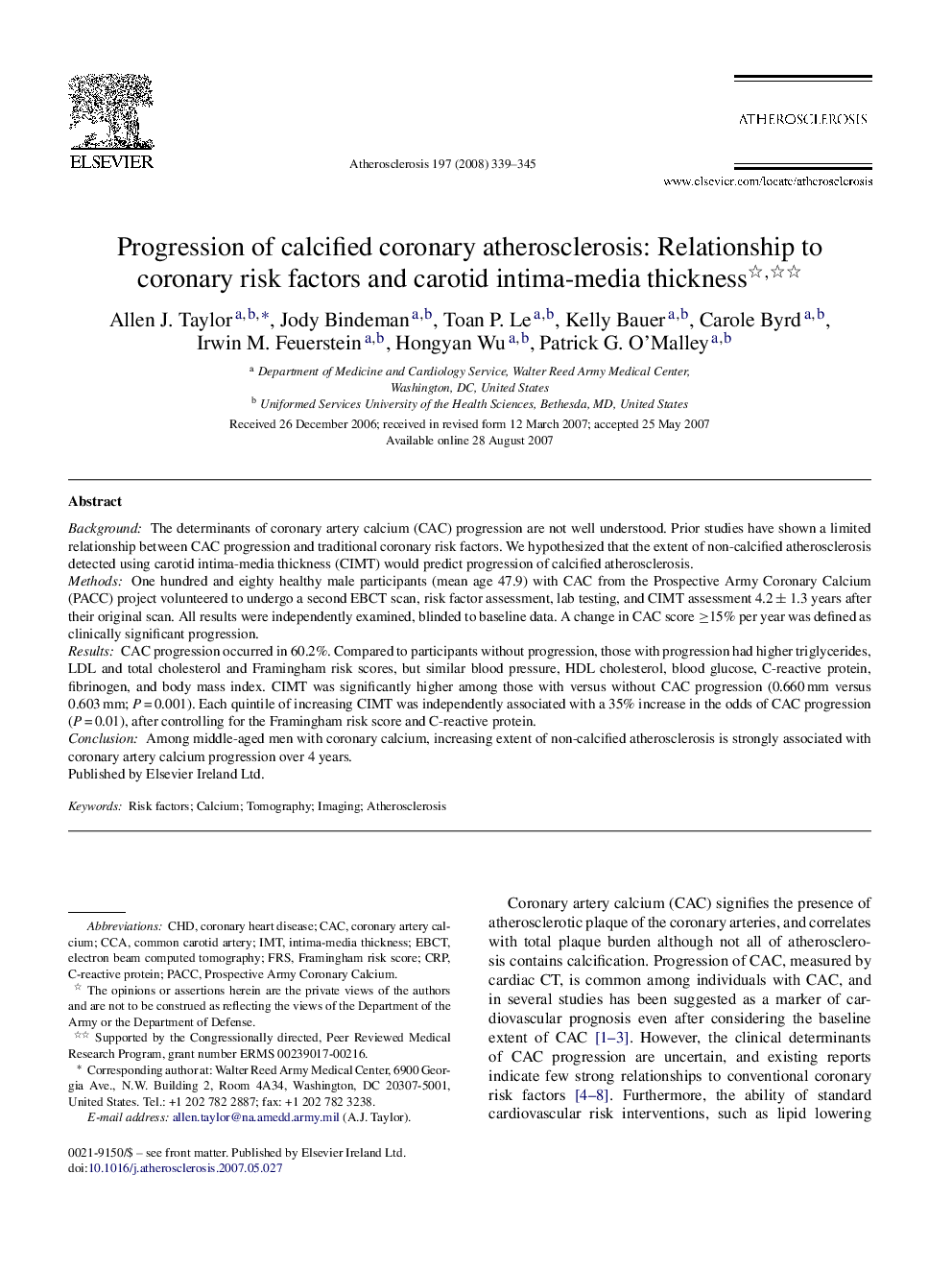| Article ID | Journal | Published Year | Pages | File Type |
|---|---|---|---|---|
| 2894763 | Atherosclerosis | 2008 | 7 Pages |
BackgroundThe determinants of coronary artery calcium (CAC) progression are not well understood. Prior studies have shown a limited relationship between CAC progression and traditional coronary risk factors. We hypothesized that the extent of non-calcified atherosclerosis detected using carotid intima-media thickness (CIMT) would predict progression of calcified atherosclerosis.MethodsOne hundred and eighty healthy male participants (mean age 47.9) with CAC from the Prospective Army Coronary Calcium (PACC) project volunteered to undergo a second EBCT scan, risk factor assessment, lab testing, and CIMT assessment 4.2 ± 1.3 years after their original scan. All results were independently examined, blinded to baseline data. A change in CAC score ≥15% per year was defined as clinically significant progression.ResultsCAC progression occurred in 60.2%. Compared to participants without progression, those with progression had higher triglycerides, LDL and total cholesterol and Framingham risk scores, but similar blood pressure, HDL cholesterol, blood glucose, C-reactive protein, fibrinogen, and body mass index. CIMT was significantly higher among those with versus without CAC progression (0.660 mm versus 0.603 mm; P = 0.001). Each quintile of increasing CIMT was independently associated with a 35% increase in the odds of CAC progression (P = 0.01), after controlling for the Framingham risk score and C-reactive protein.ConclusionAmong middle-aged men with coronary calcium, increasing extent of non-calcified atherosclerosis is strongly associated with coronary artery calcium progression over 4 years.
